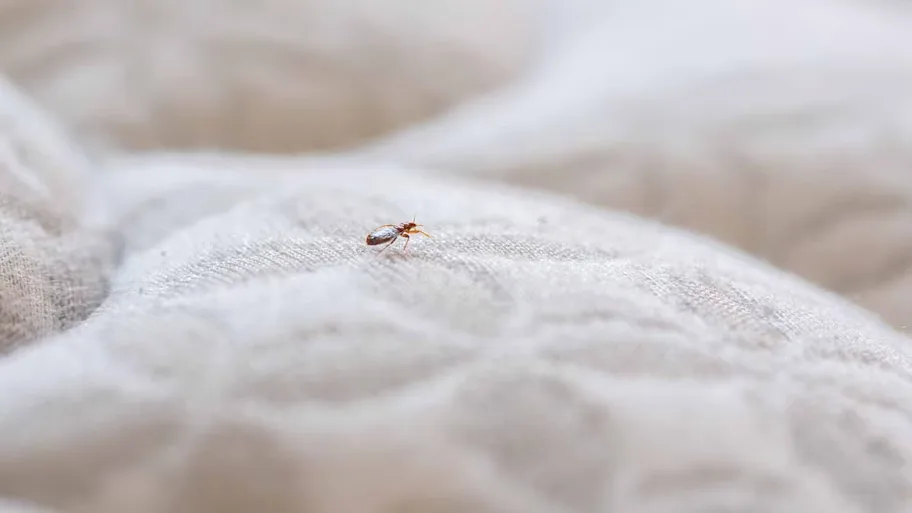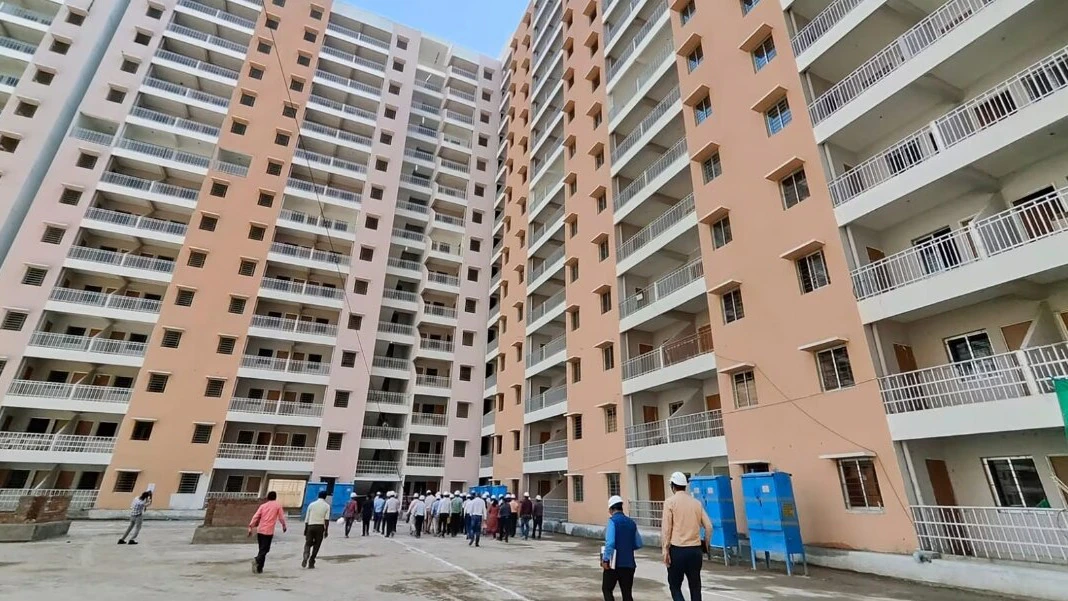Table of Content
Bed bugs are one of the hardest pests to manage because of their ability to hide in very small spaces and their resistance to treatment. Another aspect of bed bugs that makes them particularly daunting to manage is when they appear in apartment buildings because they can so easily spread from unit to unit. This article aims to be a comprehensive guide to identify, manage, eliminate, and prevent bed bug infestations in apartment buildings to provide a clean, pest-free, and healthy home.
Understanding Bed Bugs
What Are Bed Bugs?
Bed bugs are tiny reddish-brown insects that feed on human and animal blood. Adult bed bugs are about the size of an apple seed, while their eggs are small and white, even to the naked eye are hard to see. Bed bugs are mostly nocturnal, coming out at night to feed, bed bugs will return to their hiding places during the day.
Also Read: Top 9 Roof Cooling Paint Brands to Beat the Heat
How Do Bed Bugs Spread?
In apartment buildings, bed bugs can spread through:
- Shared walls, ceilings, and floors.
- Gaps in electrical outlets and plumbing.
- Infested furniture or personal belongings moved between units.
- Luggage or clothing after traveling to infested locations.
Signs of a Bed Bug infestation
To detect a bed bug infestation, look for:
- Bite marks are red, itchy welts on exposed skin that appear in clusters or as a line.
- Fecal stains are little dark blotches on bedding, furniture, or walls.
- Shedding: Bed bugs shed their skins as they mature.
- Live bed bugs are little insects that hide in crevices of furniture, beds, or baseboards.
Steps to Eliminate Bed Bugs
Effective bed bug elimination requires a systematic approach, combining professional expertise with tenant cooperation.
1. Inspection and Identification
The first step is a thorough inspection to confirm the presence of bed bugs. This can be done using flashlights, magnifying glasses, or even trained bed bug detection dogs. Focus on:
- Mattresses, box springs, and bed frames.
- Upholstered furniture and curtains.
- Baseboards, cracks, and electrical outlets.
2. Immediate containment.
To prevent the spread of bed bugs, isolate contaminated goods:
- Seal contaminated items: Pack mattresses, clothing, and small furniture in plastic bags.
- Limit movement: To limit the possibility of pest spread, avoid moving afflicted furniture through common areas.
3. Engage Professional Pest Control Services
Professional exterminators are required to handle serious infestations. They utilize advanced procedures such as:
- Heat treatments involve raising the temperature in affected regions to eliminate bed bugs and their eggs.
- Chemical Treatments: Using insecticides formulated specifically for bed bugs.
- Vacuuming: Using powerful vacuums to remove visible insects and eggs.
4. Tenant Responsibilities
Landlords should involve tenants in the eradication process. Steps tenants should follow include:
- Wash and Heat Dry Clothing and Linens: Use hot water and high heat settings to kill bed bugs.
- Declutter Living Spaces: Reducing clutter minimizes hiding spots for pests.
- Avoid DIY Treatments: Over-the-counter pesticides may worsen infestations by causing bugs to scatter.
5. Follow-Up Treatments
Bed bugs are notoriously persistent. Schedule multiple treatments to ensure complete eradication. Regular inspections after the initial treatment help identify and address any remaining infestations.
Also Read: 9 Best Chimney Brands in India: Your Ultimate Guide to Top Kitchen Chimneys
Preventing Bed Bug Infestations
Prevention is key to maintaining a bed bug-free apartment building. Implementing these measures can significantly reduce the likelihood of an infestation.
1. Regular Inspections
Inspect common areas, hallways, and units periodically. Early detection is crucial to preventing bed bugs from spreading.
2. Education and Awareness
Educate tenants about bed bugs, including:
- How to identify them.
- Safe travel habits to avoid bringing bed bugs home.
- The importance of reporting potential infestations immediately.
3. Seal Entry Points
Bed bugs often travel between units through small cracks or openings.
- Seal gaps in walls, ceilings, and baseboards.
- Install door sweeps and close openings around pipes and electrical outlets.
4. Bed Bug-Proofing Furniture
Encourage tenants to use:
- Mattress and box spring encasements to protect sleeping areas.
- Interceptor traps under bed legs to capture climbing bugs.
5. Inspection of Second-Hand Items
Advise tenants to inspect second-hand furniture, mattresses, and clothing before bringing them into their units.
6. Prompt Reporting
Promptly report any suspected infestation. Delays can allow bed bugs to multiply and spread throughout the building.
Why Professional Help is Essential
Bed bugs are some of the most difficult pests to get rid of, due to the fact that they can live for several months without a feed and they are notorious for hiding in places that are impossible to find. Most DIY methods of bed bug control do not eliminate them properly, and can sometimes make them worse. Professional exterminators have the knowledge, experience, and equipment to find and eliminate bed bugs through effective methods of pest control.
Benefits of Professional Services
- Faster and more thorough eradication.
- Reduced risk of reinfestation.
- Safe and effective use of chemicals and treatments.
Consequences of Ignoring Bed Bugs
Ignoring a bed bug infestation can lead to serious consequences, including:
1. Health Issues: Bed bug bites can cause skin infections, allergies, and psychological stress.
2. Legal Challenges: Landlords may face lawsuits for failing to address infestations.
3. Decreased Property Value: Persistent infestations can lower tenant satisfaction and reduce the appeal of the property.
4. Increased Costs: Delayed action can result in larger infestations that are more expensive to treat.
Building Policies for Bed Bug Management
Apartment buildings should establish clear policies for managing bed bug infestations:
- Include clauses in lease agreements requiring tenants to report infestations.
- Outline responsibilities for treatment costs and preparations.
- Provide guidelines for preventing and managing bed bug issues.
Also Read: Top 9 Furniture Brands in India in 2025: Redefining Home and Office Elegance
Conclusion
Getting rid of bed bugs in apartment buildings involves shared responsibility on behalf of the landlord, occupant and pest control provider. Through comprehensive inspections, professional treatment, and preventive maintenance, apartment communities can appropriately address infestations and daily life can continue appropriately.
It is important to remember that swift action and communication is critical to averting a larger bed bug outbreak. It is possible to prevent the bed bugs in your apartment building if you work together to mitigate this discomfort.
Follow AquireAcers Whatsapp Channel to Stay Updated With The Latest Real Estate News











_1766133697.webp)
Ans 1. Bed bugs are small, reddish-brown insects that feed on the blood of humans and animals. They are nocturnal and hide in cracks and crevices during the day.
Ans 2. Bed bugs can spread through shared walls, ceilings, and floors, gaps in electrical outlets and plumbing, infested furniture, personal belongings moved between units, and even luggage or clothing after traveling to infested areas.
Ans 3. Look for red, itchy bite marks on your skin, dark fecal stains on bedding or furniture, shedding of bed bug skins, and visible live bed bugs in crevices of furniture, beds, or baseboards.
Ans 4. The elimination process includes a thorough inspection to identify the problem, isolating infested items, engaging professional pest control services, and ensuring tenant cooperation through proper cleaning and decluttering.
Ans 5. Professional pest control services are essential because bed bugs are difficult to eliminate, often hiding in hard-to-reach places. DIY methods are often ineffective, and professional exterminators have the experience and tools necessary to eradicate them thoroughly.
Ans 6. Tenants should wash and dry clothes and linens on high heat, declutter living spaces, and avoid using DIY pesticides, as they can make the infestation worse.
Ans 7. Preventive measures include regular inspections, educating tenants about bed bugs, sealing entry points, bed bug-proofing furniture, inspecting second-hand items, and reporting infestations promptly.
Ans 8. Bed bug-proofing involves using mattress and box spring encasements to protect sleeping areas and placing interceptor traps under bed legs to catch any bed bugs climbing up.